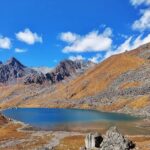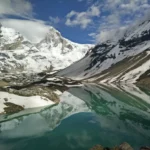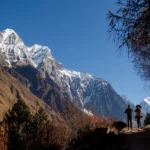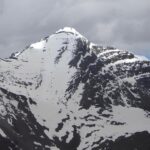A lot of trekkers, whether beginners or experienced, come to us with one common query. Which trek should I consider, Brahmatal Trek or Kedarkantha Trek? Which one is a better winter trek, Kedarkantha or Brahmatal?
Brahmatal and Kedarkantha have developed as two popular treks, especially during winter. During peak winter seasons, trekkers often struggle to choose between two accessible trails with similar snow conditions.
Here is a detailed guide to help you choose the perfect winter trek between Brahmatal or Kedarkantha.
What is a Winter Trek?
Winter trek is synonymous with ample snow on the trek. While many characters define a trek as a perfect winter trek, the amount of snow plays an important role.
Winter trek begins in December and continues till February. During this period, the snow is abundant to indulge in winter wonderland but manageable on the trail and campsites, allowing for an enjoyable Himalayan Trek.
Only a few Himalayan treks remain accessible during the peak winter season. The snow can make walking on the trail difficult, and water resources freeze completely, making many high-altitude treks impossible. The harsh climate can also hinder treks like Roopkund and Goechela. However, Brahmatal and Kedarkantha are two perfect treks with accessible trails and bearable temperatures in winter.
Kedarkantha Trek vs Brahmatal Trek
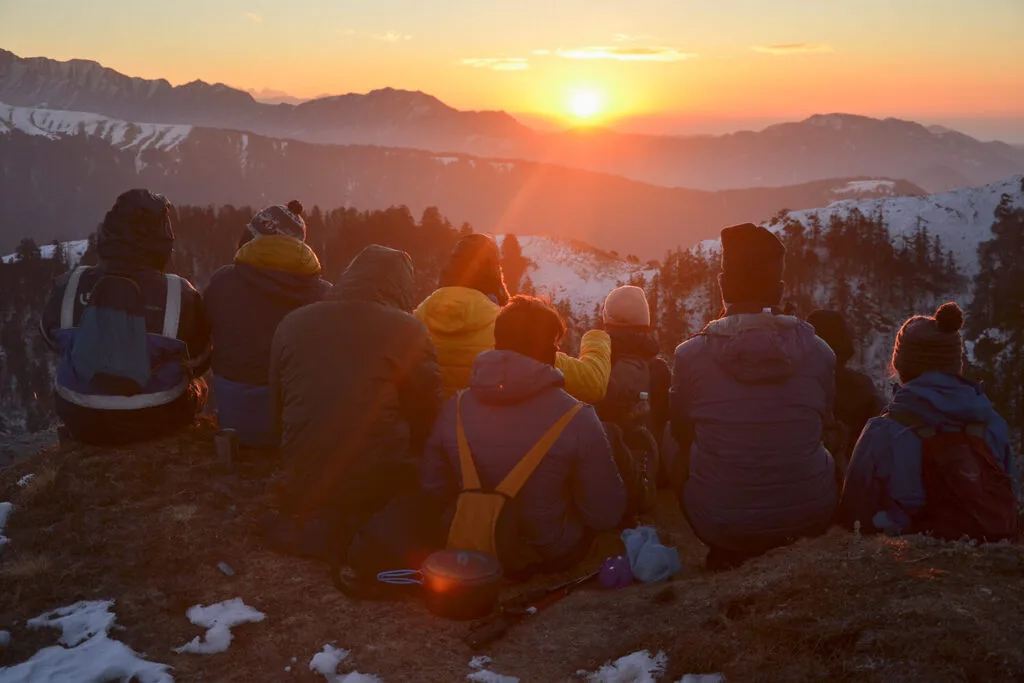
Kedarkantha and Brahmatal are located in Uttarakhand and are the two most popular winter treks in our country. The trek spreads over an equal number of days, yet there is a vast difference between the two.
As the most loved winter trek, hundreds of trekkers throng both trails every winter to experience snow to the fullest. Yet, the question is always there. Brahmatal or Kedarkatha, which one is the best?
While both treks feature top winter treks, Brahmatal and Kedarkantha are distinct from one another in many aspects. Here is a quick insight into both treks to help you choose your next winter trek.
1. Difficulty Level
Brahmatal Trek is an easy-to-moderate trek and is suitable for beginners and experienced trekkers. It qualifies as an easy to moderate, considering the trek duration and the altitude gain. The trek spreads over six days through a comfortable trail and some steep ascents and descents. It climbs to an altitude of 12250 ft.
Kedarkantha is known as the most loved winter trek in our country. Thanks to the easy trail, moderate climbs, and abundant snow.
Kedarkantha climbs to an altitude of 12500 ft. and traverses through easy to moderate trails. There are a few challenging or tricky patches. The climb to the Kedarkantha summit is steep and requires optimal physical fitness. The summit climb takes long hours to reach the top.
The difficulty of both treks depends a lot on your preparedness. If you come prepared for the trek and start your physical fitness a minimum of two months before, you will be able to trek comfortably.
2. Trekking Days
Both Kedarkantha and Brahmatal are six-day long treks, including travel to and from the base camp. During the Kedarkantha trek, you will be walking for an average of 5-6 hours per day, while Brahmatal will require you to walk for around 6-7 hours per day.
3. Basecamp Experience
Brahmatal begins from the famous Basecamp village of Lohajung. Lohajung is also the starting point for many renowned treks like Roopkund and Ali Bedni Bugyal.
Kedarkantha’s base camp is Sankri, a small village in Uttarkashi district. Sari is yet another busy basecamp village. This remote village is a starting point for a handful of Himalayan treks. The base camp experience is almost identical for both treks. As Lohajung and Sankri are basecamps for many popular treks, the villages are bustling with trekkers throughout the seasons.
4. The Summit Climb
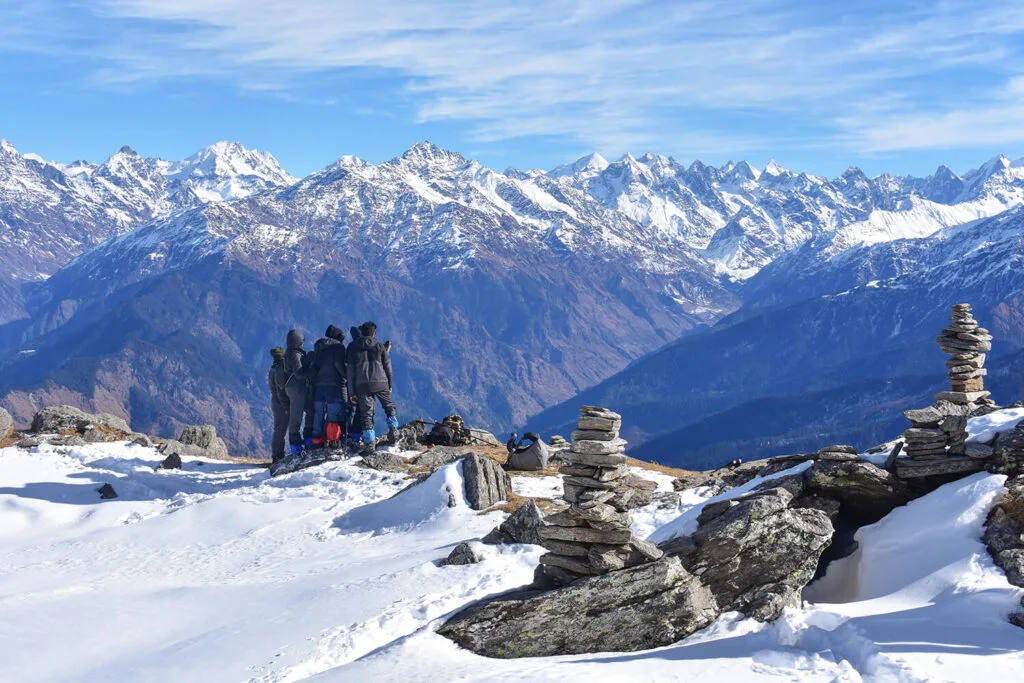
When you reach the summit of Kedarkantha, there is an adrenaline rush. kedarkantha ‘s summit is a surprise to the trekkers. Throughout the trail, there is an excitement of peak climbing and the big summit reveal. Once you reach the summit, the moment captivates you, and you are taken away by what you witness. Kedarakantha has one of the best summit views, a rare experience on any other trek. There is an entire spread of mountain ranges right in front of you. The view you will experience after the challenging summit climb is all worth it.
Brahmatal offers you a glimpse of the big mountains from the very beginning. You have Mt Trishul and Mt Nanda Ghunti playing hide and seek with you on the trail. The Brahmatal offers the grandeur of Mt. Trishul when you climb on the Brahmatal Top.
When you reach Kedarkantha Summit, you will enjoy stunning views of the arc-shaped chain of snow-capped mountains, including Bandarpoonch, Swargarohini, Kala Nag, and Ranglana.
Once at the summit, the first ray of sun seeping through those towering mountains evokes your emotions. It is surreal to be at the summit.
5. Snow on Kedarkantha vs Brahmatal
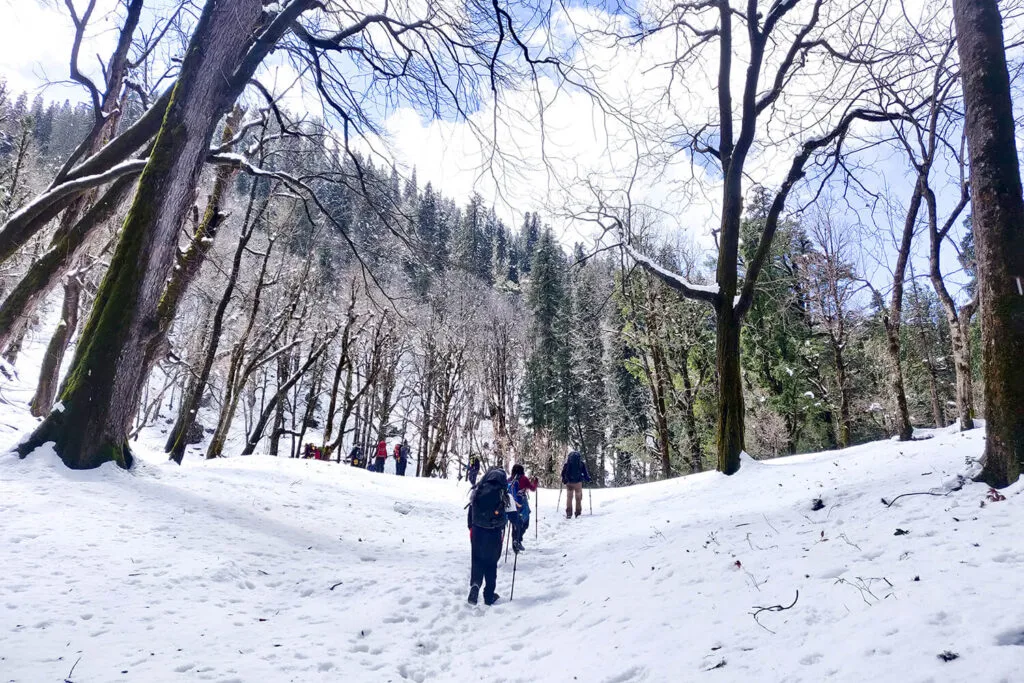
Kedarkantha is a trek that is synonymous with snowfall. Most trekkers coming to Kedarkantha have just one goal to experience snow in abundance. The trek offers snow right from the base camp during the peak winter months of December until March. The trail gets covered in snow during the peak winter season. The campsites and the forest are covered in shades of white. Kedarkantha in winter turns into a winter wonderland. Kedarnath offers a knee-deep snow experience as you climb to the higher campsite.
Brahmatal stays caught up when it comes to snow on the trail. Towards the end of December, Lohajung, the base camp, also receives snowfall. The trekkers get to experience snow right from the base camp. The dense forest of oak and pine is covered in all white. While the Kedarkantha summit is easily accessible even in peak winter, Brahmatal becomes trickier and slightly more difficult when the snow piles up on the top.
6. Average Altitude Gain on Brahmatal and Kedarkantha
When you start climbing on day 2 of your trek, the altitude gain is around 2700 ft as you start from Sankri(6,400 ft) to Juda ka Talab (9,100 ft). The average altitude gain on the Kedarkantha trek is around 2000 ft.
Altitude gain in Brahmatal Trek is comparatively less. You gain around 2000 ft. when you start from Lohajung(7,700 ft) to Bekaltal (9,700 ft). The average altitude gain on Brahmatal Trek is around 1000 ft every day.
7. The Campsites
If Kedarkantha lets you camp by the frozen lake of Juda Ka Talab, Brahmatal offers two beautiful alpine lakes, Bekaltal and Brahmatal.
Another highlight of the Brahmatal trek is a ridge walk till you reach the Jhandi Top. The Ridge Walk offers the mighty Mt.Trishul on one side and the beautiful layers of mountains spreading on the other.
Kedarkantha, on the other hand, doesn’t offer a ridge walk experience, but the campsite of Juda ka Talab compensates perfectly. Juda ka Talab remains frozen during the peak winter season and is surrounded by snow cover and trees draped in fresh snow.
8. Weather
The weather during the winter months is harsher and colder. The days are cold and the night temperature dips down to sub-zero.
In Kedarkantha, the daytime temperature ranges between 8°C and 10°C. The night temperature drops to 0°C and the lowest can be recorded at -10°C.
Although the winter months are heavenly on Brahmatal, the dipping temperature on the trek requires you to layer yourself properly. The day temperature ranges between 8°C and 10°C. You will not feel the cold while climbing. However, the campsite gets colder, and the night temperature drops 0°C and -8°C in Brahmatal.
The Verdict Kedarkantha v/s Brahmatal
It is difficult to zero down on one trek as the best one. Both the treks have their characteristics. If Kedarkantha boasts grand summit views, Brahmatal remains in the game with majestic mountain views from the beginning. As a winter trek in the Himalayas is considered a snow experience, Brahmatal and Kedarkantha have almost the same amount of snow.
If you want to trek for an ultimate snow experience, we suggest you check out Kedarkantha. If you wish to experience the serenity of the forest trail, alpine lakes, and ridge walk, Brahmatal can be your choice this winter. However, to be able to declare one as a must, every trekker must experience both these trails.
If you are also in a fix and unable to decide which trek to consider, we suggest evaluating your preference before finalizing the trek.

